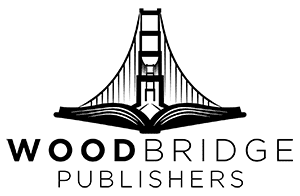The dream of becoming a published author is one shared by many. With the advent of modern technology and the rise of self-publishing platforms, this dream is more attainable than ever. This blog post will explore the steps to printing a book and selling it, covering everything from writing and editing to printing and marketing. Whether you’re a budding novelist or a seasoned writer looking to self-publish, this guide will provide you with the essential information you need.
Writing Your Book
The journey to print a book begins with writing. This might seem obvious, but it’s worth emphasizing that a well-written manuscript is the foundation of your success. Here are some key points to consider:
- Develop a Strong Concept: Your book needs a clear and compelling idea. Spend time brainstorming and outlining your plot or main arguments if you’re writing non-fiction.
- Set a Writing Schedule: Consistency is key. Set aside dedicated time each day or week to write. This helps maintain momentum and ensures steady progress.
- Seek Feedback: Once you have a draft, get feedback from trusted friends, colleagues, or beta readers. Constructive criticism can help refine your work.
Editing and Proofreading
Editing is a crucial step that can make or break your book. It involves reviewing your manuscript for errors, inconsistencies, and areas for improvement.
- Self-Editing: Start by revising your work yourself. Look for grammatical errors, awkward phrasing, and plot holes.
- Professional Editing: Hiring a professional editor can be a worthwhile investment. They bring an objective eye and expertise that can elevate your book’s quality.
- Proofreading: This final step ensures that your book is free from typos and minor errors. Consider hiring a proofreader or using tools like Grammarly.
Designing Your Book
A well-designed book cover and interior can significantly impact its appeal and readability.
- Cover Design: Your book cover is the first thing potential readers will see. A professional, eye-catching cover can draw readers in. You can hire a graphic designer or use design tools like Canva.
- Interior Layout: The interior design should be clean and easy to read. This includes choosing the right font, spacing, and margins. Tools like Adobe InDesign or Vellum can help with this.
ISBN and Copyright

Before printing your book, you’ll need to take care of some legalities.
- ISBN: An International Standard Book Number (ISBN) is a unique identifier for your book. It’s required for selling your book through retailers. You can purchase an ISBN from an official agency in your country.
- Copyright: Your work is automatically copyrighted once you create it, but you can register your copyright to have legal documentation. This can be done through your country’s copyright office.
Printing Your Book
With your manuscript polished and designed, it’s time to print your book. There are several options available:
- Print-on-Demand (POD): This is a cost-effective option where books are printed as orders come in. Popular POD services include Amazon’s Kindle Direct Publishing (KDP) and IngramSpark. POD is ideal for self-publishers as it reduces upfront costs and inventory risks.
- Offset Printing: This traditional printing method is suitable for larger print runs. It can be more cost-effective per unit for large quantities but requires a significant initial investment. Companies like BookBaby and PrintNinja offer offset printing services.
Selling Your Book
Once your book is printed, the next step is selling it. There are various channels you can use to reach your audience:
Online Retailers
- Amazon: As the largest online retailer, Amazon is a crucial platform for selling your book. With Amazon KDP, you can easily publish and distribute your book globally.
- Barnes & Noble: Another major retailer, Barnes & Noble Press, allows you to publish and sell both print and eBooks.
- Apple Books: If you have an eBook version, consider selling it on Apple Books to reach a broad audience of Apple users.
Your Own Website
Creating a website to sell your book gives you complete control over the sales process and customer data. You can use platforms like WordPress with WooCommerce, Shopify, or Squarespace to set up an online store.
Bookstores and Libraries
Getting your book into physical bookstores and libraries can enhance your credibility and reach. You can approach local bookstores and library systems directly or use distribution services like IngramSpark, which offers access to a wide network of retailers and libraries.
Social Media and Marketing
Effective marketing is crucial to selling your book. Here are some strategies to consider:
- Social Media: Platforms like Instagram, Twitter, and Facebook can help you build an audience and promote your book. Engage with your followers, share behind-the-scenes content, and run promotional campaigns.
- Author Website and Blog: Maintain an author website and blog to connect with readers. Share updates, writing tips, and insights into your book’s creation.
- Email Marketing: Build an email list to keep in touch with your audience. Offer a free chapter or exclusive content to encourage sign-ups.
- Book Launch Events: Host virtual or in-person book launch events to generate excitement and sales. Partner with local bookstores or libraries for added exposure.
- Book Reviews and Press: Reach out to book reviewers, bloggers, and media outlets for reviews and coverage. Positive reviews can significantly boost your book’s visibility.
Handling Finances and Legalities
Running a successful book-selling venture involves managing finances and legal aspects:
- Pricing Your Book: Set a competitive price for your book. Research similar titles to see what readers are willing to pay. Consider printing costs, distribution fees, and your desired profit margin.
- Taxes and Royalties: Understand the tax implications of selling your book. Keep track of your income and expenses for tax purposes. If you’re using a platform like Amazon KDP, familiarize yourself with their royalty structures.
- Contracts and Agreements: If you’re working with editors, designers, or distributors, ensure you have clear contracts outlining the terms of your agreements.
Wrap Up
Printing and selling a book is an exciting and rewarding endeavor. With the right approach, you can bring your literary dreams to life and share your work with the world. From writing and editing to printing and marketing, each step requires careful planning and execution. Embrace the journey, stay dedicated, and remember that every successful author started where you are now. Happy publishing!
Frequently Asked Questions
1. Can I print my book at home?
While it’s technically possible to print your book at home using a high-quality printer, it’s generally not recommended for large quantities. Home printing can be costly and time-consuming, and the quality may not match professional printing services. For better quality and cost-effectiveness, consider using Print-on-Demand (POD) services or professional printing companies.
2. How much does it cost to print a book?
The cost of printing a book varies based on factors such as the number of pages, type of binding, paper quality, and the quantity of books printed. Print-on-Demand services typically have no upfront costs but may have higher per-unit prices. Offset printing is more cost-effective for larger print runs but requires a significant initial investment. On average, printing a standard paperback book can range from $2 to $5 per copy for POD, while offset printing costs can be lower per unit for larger quantities.
3. Do I need an ISBN to sell my book?
An ISBN (International Standard Book Number) is not mandatory for selling your book, but it is highly recommended. An ISBN helps bookstores, libraries, and online retailers track and order your book. It also enhances your book’s credibility and professionalism. Most retailers, especially large ones like Amazon and Barnes & Noble, require an ISBN for listing your book.
4. How can I market my self-published book?
Effective marketing strategies for self-published books include:
- Social Media: Use platforms like Instagram, Twitter, and Facebook to build an audience and promote your book.
- Author Website and Blog: Maintain a website and blog to connect with readers and share updates.
- Email Marketing: Build an email list to keep in touch with your audience and offer exclusive content.
- Book Launch Events: Host virtual or in-person book launch events to generate excitement and sales.
- Book Reviews and Press: Reach out to book reviewers, bloggers, and media outlets for reviews and coverage.
5. What are the best platforms for self-publishing?
Several platforms cater to self-publishing authors, each with its own set of features:
- Amazon Kindle Direct Publishing (KDP): Offers extensive reach and both eBook and print-on-demand services.
- IngramSpark: Provides wide distribution to bookstores and libraries and supports both print and eBooks.
- Barnes & Noble Press: Allows you to publish and sell both print and eBooks with access to Barnes & Noble’s network.
- Apple Books: Ideal for reaching a broad audience of Apple users with your eBook.
- Smashwords: Specializes in eBook distribution to multiple retailers and libraries.



